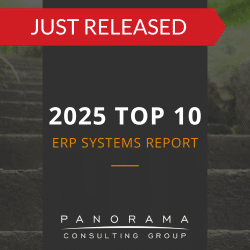While everyone wants change, no one wants to change. This is a well-known adage in the field of change management. Put another way, it’s often easier to convince people of the need for something new than to get everyone moving in the same direction toward that objective.
While change management practitioners understand this adage, many organizations don’t. As a result, they don’t recognize the importance of investing in change management because their team is already “open to the idea of change.”
What is change management? It is a critical part of any enterprise software implementation, and not investing in change management is the biggest barrier to rolling out successful organizational changes. Thus, the attitudes and opinions of project teams that cause companies to overlook change management can also be considered barriers to organizational change.
Barriers to Organizational Change: The 4 Deadly A’s
1. Aloofness
In our experience with over 50 clients going through a business transformation, less than a quarter of project managers, senior leadership, IT and financial leadership embrace the need for a structured change management plan.
They were either reticent, indifferent or disinterested. Mostly, they were aloof. The primary reasons were that they . . .
- Were too busy with technical requirements
- Lacked understanding of the people side of change
- Had budget constraints
- Lacked executive support
Most clients said that, in hindsight, the first thing they would add to their project plan would be an allocation for organizational change management support.
Change Management Success Story
The client recognized their need for more comprehensive change management, so they asked us to fill in the gaps. We developed a robust communication plan to supplement the vendor’s communication approach.
2. Apathy
The basic lack of caring – whether on the part of senior leadership, the project team or the corporate culture – can be a huge barrier to organizational change.
Many times, it’s leadership or the IT team saying, “We have to do this project anyway, so let’s just get it done.” This type of indifference also has roots in the culture of the enterprise or within functional groups.
Then, the indifference tickles down, until employees are saying to their coworkers, “Just keep your head down and pretend to go along. In six months, we’ll be back to the way we used to do this. We’ll outlast the changes, and the new processes won’t work.”
A culture of change resistance can usually be traced back to prior efforts that were apathetic toward the need for a change structure. This culture can also be traced back to a lack of employee engagement or a lack of understanding about the role of benefits realization.
3. Assumptions
When organizations get stuck in the process of “just doing,” the people who will determine the success of the project are usually the last to know about the project.
For example, let’s say the leadership and project teams have been planning for the changes for some time, and they know the strategic imperatives as to why transformation must happen. They assume, erroneously, that everyone else is on board because they recall having mentioned the project in a town hall or company email. However, they also admit they have no idea what stakeholders heard and retained, if anything.
These leaders didn’t take the time to:
- Articulate a vision
- Provide active and visible sponsorship
- Inspire hope and aspiration
- Ask for fresh ideas
- Take ownership for success

4. Avoidance
Avoidance of change management usually happens when leadership or project leads don’t take the time to ask employees for their opinion.
For example, the project may have a challenging timeline, and an employee might want the project team to know, “I don’t have time for that, and I don’t have any support.”
The result of avoiding feedback is a lost opportunity for stakeholders to be a part of the process and solution, to express their fears, to share their ideas and to consider the opportunities that the changes could bring. Most importantly, the organization misses the chance to capture overlooked or undocumented benefits.
We have conducted focus groups with thousands of employees, and the overwhelming majority just want to have a voice.
Why? Because change is personal, and employees have a stake in the result. They want to be heard and considered in the process. They actually do want the company and project to succeed – they just need to first understand the “why.”
To ensure employee engagement, it’s important for leaders to ask themselves:
- Do I understand the risks and benefits of this project from all levels?
- Do the expected results depend on people changing how they do their jobs?
- What percentage of the new ERP system’s processes and benefits are dependent on users?
The Importance of Change Management
The importance of change management cannot be understated. Change management gives employees a voice and provides them with the tools and easy-to-understand language they need to navigate buy-in and own the changes.
If any of these four deadly A’s causes a company to neglect change management, this will be a barrier to organizational changes, such as new business processes and new ERP software.
No organization can successfully roll out such organizational changes when employees will feel ignored, unimportant and confused. Requiring employees in this state of mind to embrace change will not create an effective and efficient workforce but one that does the bare minimum – just enough to appear accepting of change but not enough to take full advantage of new processes and technology.
To learn more, request a free consultation below for the opportunity to speak with one of our organizational change management consultants.













